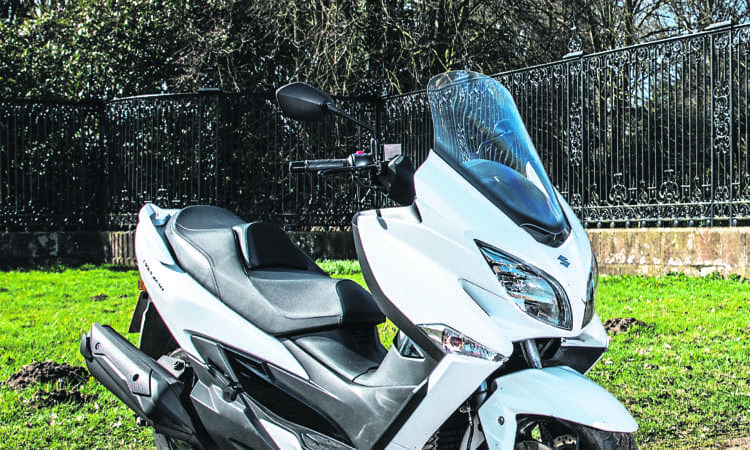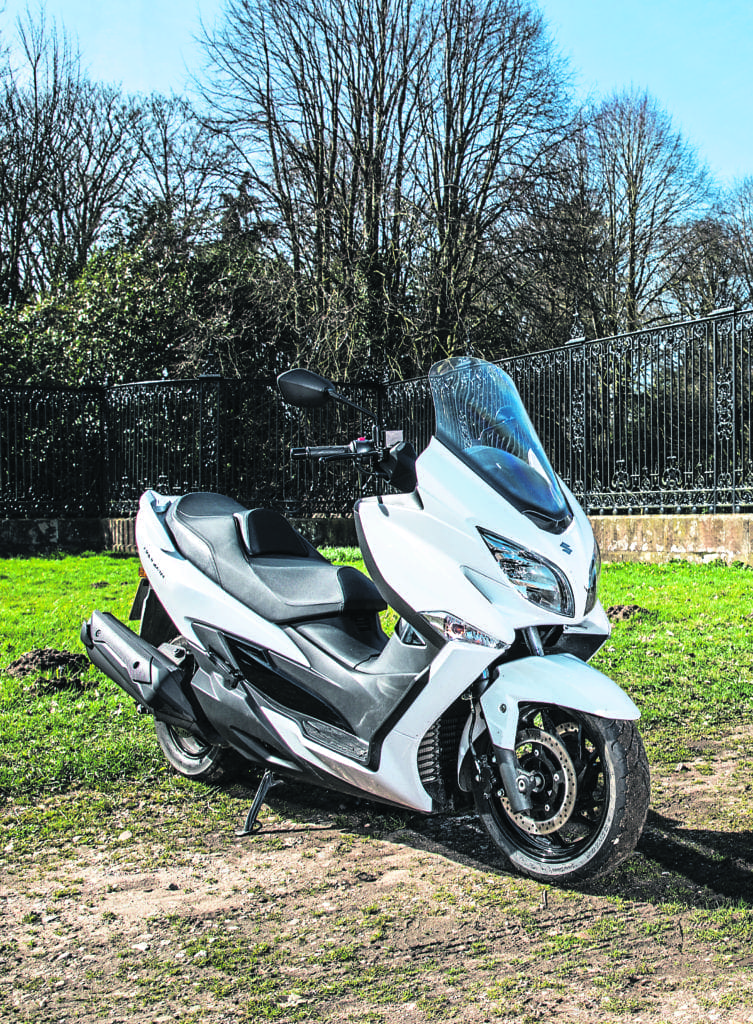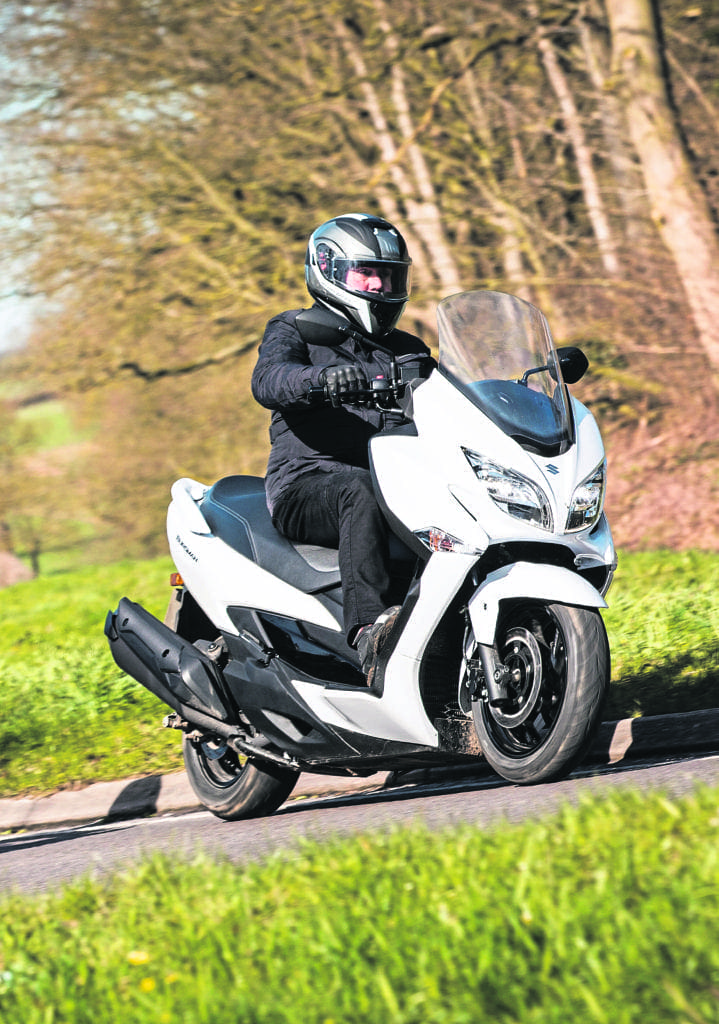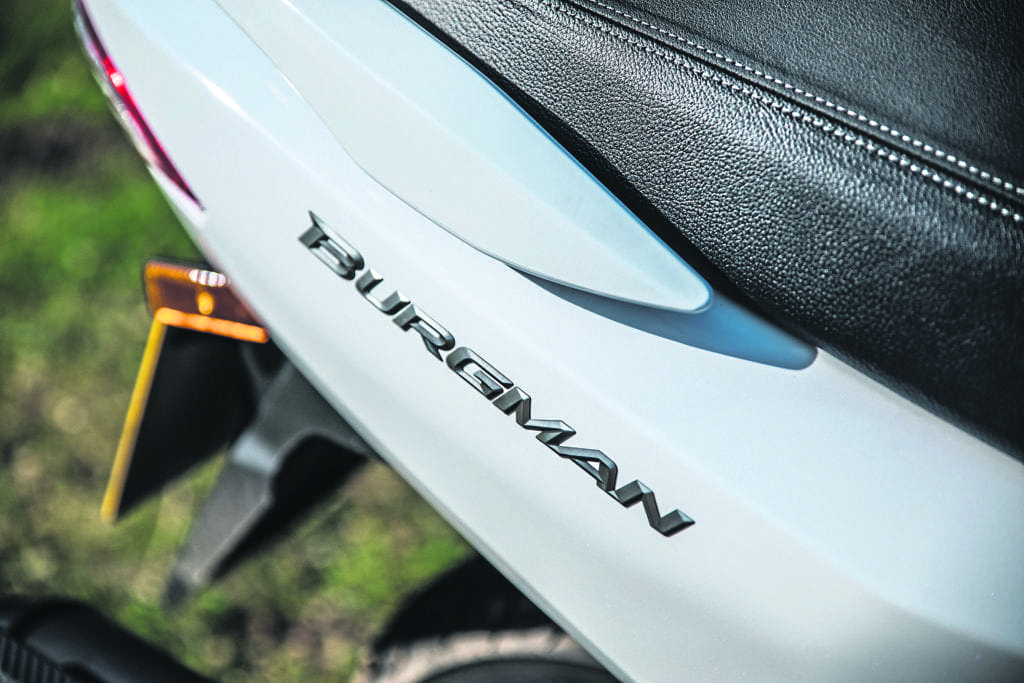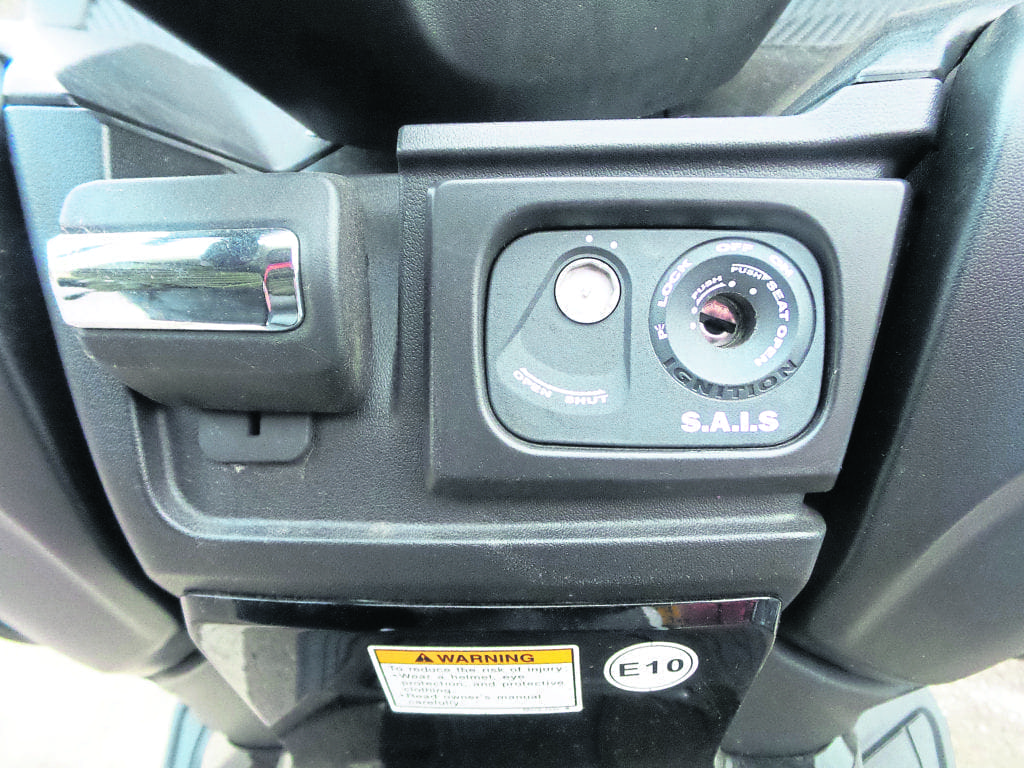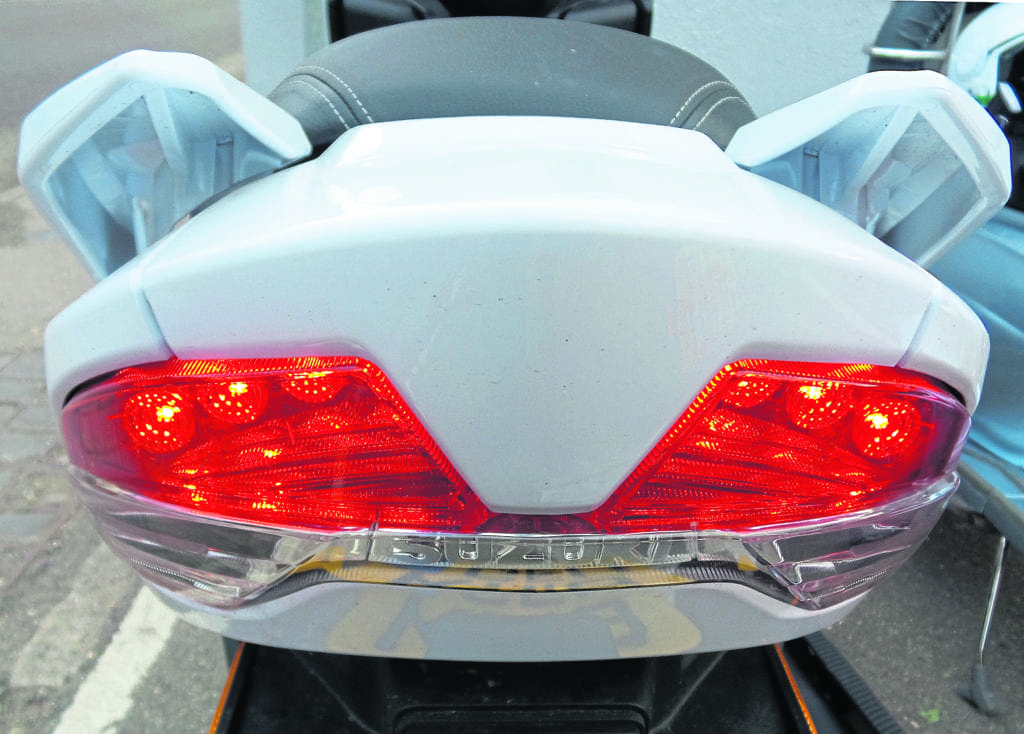Suzuki’s Burgman scooter celebrates its 20th anniversary this year and it’s still one of the most popular models around the world. It’s considered by many to be the original maxi scooter (a testament to its success).
With the latest 2018 version now available in UK dealerships, Mau takes a look at what’s new and what’s not on the latest 400cc version.
Enjoy everything More Bikes by reading monthly newspaper, Read FREE Online.
Originally launched in 1998, the Burgman has been a recurring factor in my life over the past 20 years, having ridden most variations and model updates. It has always proved itself to be a good, solid, workhorse – especially on longer distance trips around the UK and Europe. During the last 20 years it has also gained itself a loyal following with dedicated clubs and forums springing up across Europe. It’s considered by many to be the original incarnation of a maxi scooter. Of course, all of this leaves it with a tremendous legacy, so will this latest version live up to its reputation?
To keep up to date on everything On 2 Wheels, like our Facebook page or follow us on Twitter here.
First observations
At a quick glance the 2018 model appears a little smaller than previous versions – and it is, having lost a little length, width and weight (although it’s still a little heavier than it was on release in 1998). The new stepped seat, combined with the shortened length of the scooter pushes the driver’s position a little forward; that’s not a problem on short daily commutes, but I’ll wait to be convinced on whether it affects comfort on long journeys; Suzuki says the seat itself is 20mm thicker than on the old model, so that should help with ‘numb bum’ syndrome.
Something else I suspect has shrunk (although I couldn’t find any reference to it in the tech specs) is the underseat storage space – Suzuki claims you can get two helmets under the seat, albeit one of them being a ‘Jet’ style. There are some other limited storage facilities available, which consist of two compartments in the front legshields, one of which contains a 12v DC power outlet.
Although the Burgman’s stature has shrunk slightly, the front wheel has got bigger; the rear wheel remains at 13 inches, but the front wheel is now 15 inches (maybe this is part of the reason why the new Burgman’s seat height is up on the previous model, sitting at 755mm)?
To keep up to date on everything On 2 Wheels, like our Facebook page or follow us on Twitter here.
Style-wise there have been several changes; to match the weight loss, the Burgman also gets a more compact-looking upswept front windscreen (tool adjustable). The restyled front end brings a sharper, edgier look to the scooter, enhanced by the dual LED headlights with integrated LED running lights and indicators. At the rear, there are independent LED combination lamps which incorporate the rear indicators.
On the dashboard you’ll find large analogue speedometer and tacho dials; the accompanying digital display unit provides you with a plethora of information courtesy of an odometer, dual trip meters, a fuel gauge, coolant temperature, average fuel consumption, ambient temperature, a freeze indicator plus a clock. Another feature is Suzuki’s ‘Eco Drive’ indicator (a warning light that flashes on and off to tell you just how economically you’re riding). And while we’re talking about more miles from the tank, the new Burgman’s fuel tank capacity is larger (if only slightly) at 13.5 litres.
Under the skin
The Burgman’s DOHC four-valve engine is still basically the same as in the old 2017 version, although it has been updated to provide greater low-to-mid-range torque and more powerful performance; some changes have been made in order to help meet the latest emission regulations (including a new cam profile and an enlarged air intake box); this helps the Burgman achieve a CO2 value of 91g/km, but overall, the engine’s maximum power has actually gone down by around 1bhp.
Housing the power unit is a new large diameter ‘underbone’ frame with thin wall tubes to help with weight and rigidity. Complementing the frame are 41mm telescopic, oil damped, coil spring front forks, while the rear end of the scooter is taken care of by a link-type oil-damped coil spring preload adjustable mono shock setup.
Braking is taken care of by twin front discs with a single unit to the rear operated via a linked braking system which works by the use of a new Nissin ABS unit (750g lighter than the 2017 version). The rear brake can also be locked via a lever that holds it on when parked-up (useful when stopping or parking on a slope).
Security aspects
To help keep the scooter safe and secure the Burgman has the ‘Suzuki Advanced Immobiliser System’
(SAIS) fitted as standard; it uses an electronic identification system embedded in the owner’s key to stop unauthorised people from starting the engine. The scooter’s ignition lock also comes with a magnetic security cover that will only open by using the correct ignition key.
Price point
The AN400’s RRP has been set at £6299 (plus OTR charges), so at that price point it’s pitched against the likes of Yamaha’s X-Max 400, currently on offer (at the time of going to press) from £5999 upwards (depending on model variation), so it looks like the Burgman could have a battle on its hands if Suzuki wants to attract purchasers. Both scooters are available with the latest 2018 configurations and updates, so it could be interesting to see which way that battle goes…
To keep up to date on everything On 2 Wheels, like our Facebook page or follow us on Twitter here.
Advert
Enjoy everything More Bikes by reading the MoreBikes monthly newspaper. Click here to subscribe, or Read FREE Online.


